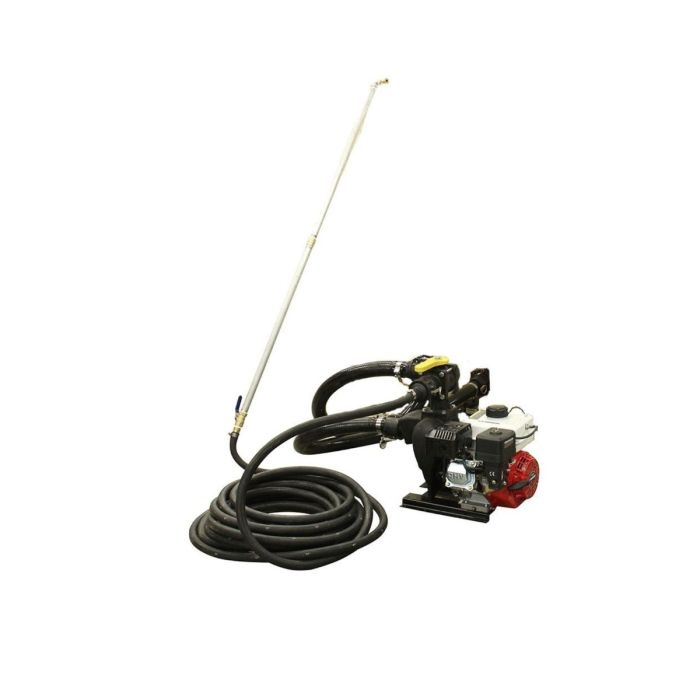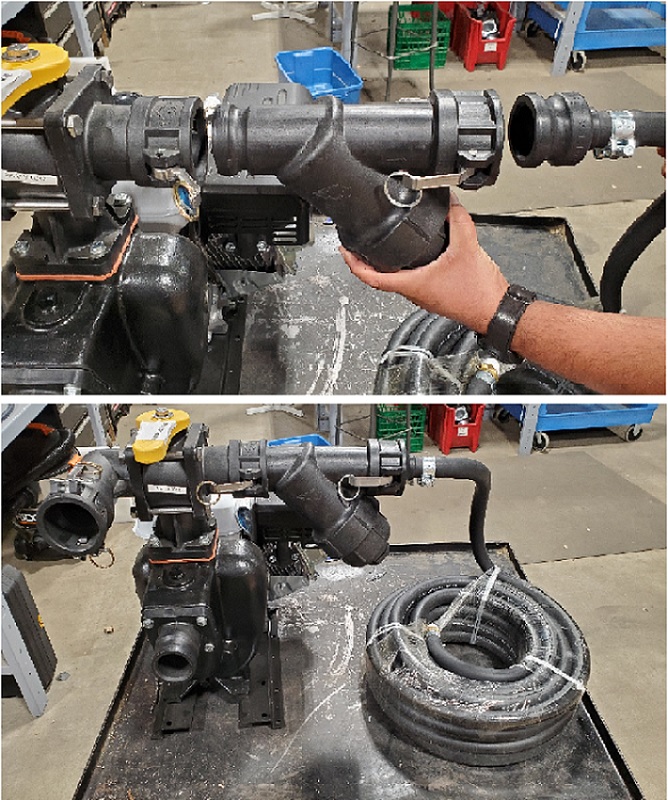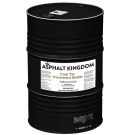Portable Sealcoating Sprayer
Add AK Make it a Biz Success Pack - Free With Purchase

Portable Sealcoating Sprayer is a cost effective to spray sealer on driveways and parking lots. It connects to tote adapter kit or barrel adapter kit.
- Quick-connect fittings
- Works with drums or totes
- Includes tips, hose, and spray wand
Have questions? We’re here to help!

Adding Seal Coating To Your Business? Check Out This Versatile Portable Sealcoating Sprayer
- use this with acrylic or water-based sealer
- connects to tote adapter kit or barrel adapter kit
- use for for occasional sealcoating when you don't want to store a spray system with a tank
When I started in the seal coating business it was literally with a five gallon bucket of sealer and a squeegee. As soon as I could afford to, I upgraded to an asphalt spray system. It made a huge difference: I could sealcoat much more quickly than I was able to do by hand, and to my surprise it actually used less sealer! That's because these machines are designed to spray evenly every time.
Depending on where you are, you may want a drum system or a tote system: this portable sealcoating sprayer allows you to choose either one, or even better: swap between both depending on what is available at the job site. I've had general repair contractors tell me that it's one of the best features of this machine: it's small enough to store between jobs, and light enough to lift in and out of trucks or trailers. What a great addition to any business!
The Portable Spray System is great for new contractors, property managers, as well as do-it-yourself parking lot owners. As a property owner this unit will cut your asphalt maintenance costs down substantially by allowing you to seal your own lot.
Use this system to connect to either a Tote of asphalt sealer, or a Drum of asphalt sealer. You can even buy both connection kits for maximum flexibility.
Coverage: If you purchase this unit with the Drum Connection Kit and a drum of asphalt sealer, you'll get approximately 6,500 square feet of coverage. If you purchase it with the Tote Connection Kit and a tote of sealer, you'll get 32,000 square feet of coverage.
Sealer Types: uses acrylic or water-based sealer only. Do not attempt to spray oil-based or petroleum seal coat as it will ruin the machine and void your warranty.
Thinking of starting a business? If you complete 32,500 sq ft at 21 cents per square foot you can generate $6,825 in gross revenue from just one full tote of sealer.
Note: Do not use sand with this spray system.
Have questions? We’re here to help!

| Engine Options | Launtop LT210 7.0HP Four-Stroke Engine with Low Oil Shutdown, Recoil Start or Honda GX160 5.5HP Four-Stroke Engine with Low Oil Shutdown, Recoil Start |
| Pump Specs | Standard: 2” Aluminum Centrifugal Pump Standard Duty, EPDM Mechanical Seal Cast Iron Impeller Or optional upgrade 2" Cast Iron Centrifugal Pump Severe Duty, Viton/Tungsten Mechanical Seal Cast Iron Impeller Stainless Steel Wear Plate |
| Tank | 50’ x ¾” – 275psi Rated Sealcoating Hose 6’ Ball Valve Gun w Hose Swivel 2GPM, 3GPM, 4GPM Quick-Connect Spray Tips (1/Each) Quick-Connect 3-Way Valve |
| Included Accessories | 50’ x ¾” – 275psi Rated Sealcoating Hose 6’ Ball Valve Gun w Hose Swivel 2GPM, 3GPM, 4GPM Quick-Connect Spray Tips (1/Each) Quick-Connect 3-Way Valve |
| Performance | Agitation through pump recirculation @ 165 GPM Sprayer Pressure: 45 psi at tip |
| Weight | 155 lbs |
| Dimensions | 30" x 25" x 30" |
| Sealer Compatibility | Refined coal tar emulsion without additives Asphalt emulsion sealer without additives |
| Manuals |
4.5
5 stars
60% (3)
4 stars
20% (1)
3 stars
20% (1)
2 stars
0% (0)
1 star
0% (0)
Share your thoughts with other customers
Top customer reviews
- That was easy!I never thought doing DYI on our driveway will be so easy. Totally recommend this product. Perfect spray, no issues whatsoever!
- Easy BreezyWe have a 14,000 foot driveway to our family holiday house. Sealcoating it by hand was a definite no-go. We bought this and a couple of drums of sealer and the whole project was done in no time flat. Easy DIY machine.
- Simple and easy to connectWe purchased the sprayer to connect to our 200 gallon tank we bought used. We had to add some plumbing to our tank so the hoses connected. It sprays great.
- Farm driveway completedI was putting sealer on my 24,000 square foot farm driveway. I decided to do it with a sprayer instead of with a broom. Sprayed very well and very easy to operate. Will buy sealer in coming years and do it again on my own.
- Barrel system needs improvementThe barrel system is ineffective when you get down 1/3 of material left in the barrel. Everything else works fine.
Start your Asphalt Maintenance Business just like Judd did!
Our founder, Judd Burdon, started in the asphalt business by sealcoating driveways and parking lots. It's a great niche service that helps prolong the lifespan of the pavement, and makes it look great. Click to add the Make it A Business resources to your spray system order, absolutely free:
- Role-Practice Video: Judd Burdon walks you through how to pitch sealcoating to prospects, including the questions you should ask them and the most likely questions they will have for you. Learn from the master!
- Phone Script: Swipe this powerful phone script and convert customers faster when you're prospecting. Use it yourself or hire someone to generate jobs while you're out working.
- Social Media Templates: Just add your logos to these great-looking graphics, post on your social media, and spread the word about your sealcoating business. You'll love the action you see from these lead generating images!
- Sealcoating Proposal Template: Use this proven template to fill in, print off and present to prospects. When your business looks professional, you can charge more for your services.
- Access to the AK Round Table: Want to join a group of like-minded people on a journey to build their own asphalt maintenance empire? Get access to our weekly Zoom meeting and get answers to your most pressing questions.
Starting an asphalt maintenance business can be scary if you don't have the resources you need to succeed. Let us do the heavy lifting for you. Make It A Biz!












 Download the Portable Sprayer Manual
Download the Portable Sprayer Manual

